Over the years, airbrush makeup has established itself as a popular makeup practice within the beauty industry. Used for SFX makeup, editorial shoots, and bridal looks, it’s an art that takes ample amounts of patience and time to properly master. But once you do, it can skyrocket your professional career to a whole new level!
While it can be tempting to simply purchase an airbrush machine and get going right away, don’t be too quick to jump the gun! (Like what we just did there?) The fact is, if you’re unfamiliar with airbrush makeup, there are things you NEED to learn first.
Proper training is a must! Before you begin offering airbrush makeup services to your clients, you must first ensure that you fully understand:
- The safety precautions required, and
- The professional etiquette expected of you
So, let’s break these down and look at the basic rules of airbrush makeup safety and etiquette!
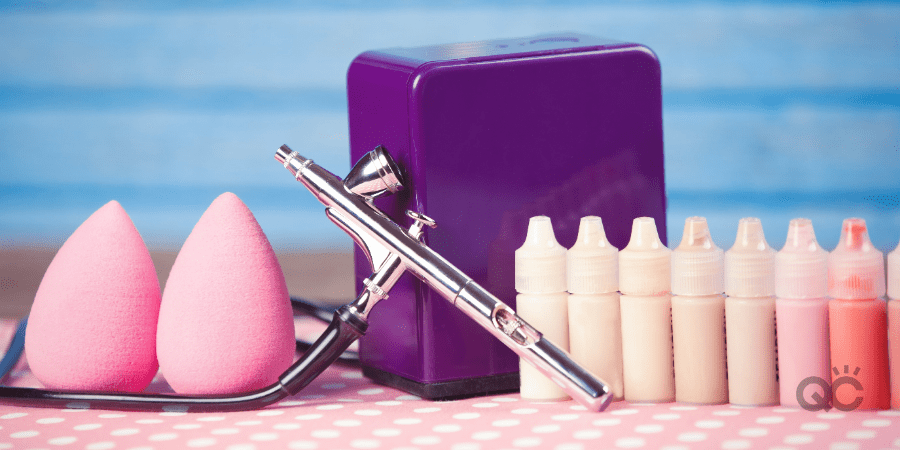
Airbrush Makeup: Safety & Etiquette Tips
Different types of makeup call for different best practices when it comes to hygiene. Airbrush makeup is of no exception. If you don’t know what you’re doing, there’s room for a lot to go wrong. It can put your client at risk and potentially damage your reputation in the industry.
Your best bet is to put in the time, acquire proper training, and adequately prepare yourself. Here are some of the best ways to do that…
1. Take an airbrush makeup class
The single most effective way to learn ANY aspect of makeup is to get reputable training from an accredited school. Do thorough research, and find an esteemed makeup school that offers a class or workshop specifically for airbrush makeup.
In most cases, you’ll not only be provided with high-quality equipment (as part of your tuition fee); you’ll be trained by actual, working MUAs who know exactly what they’re doing. Any makeup school worth its salt will also ensure that in addition to basic theory, technique, and application, you’re taught safety, etiquette, and even business components.
Plus, once you graduate from the program, you’ll have an extra certificate to add to your resume!
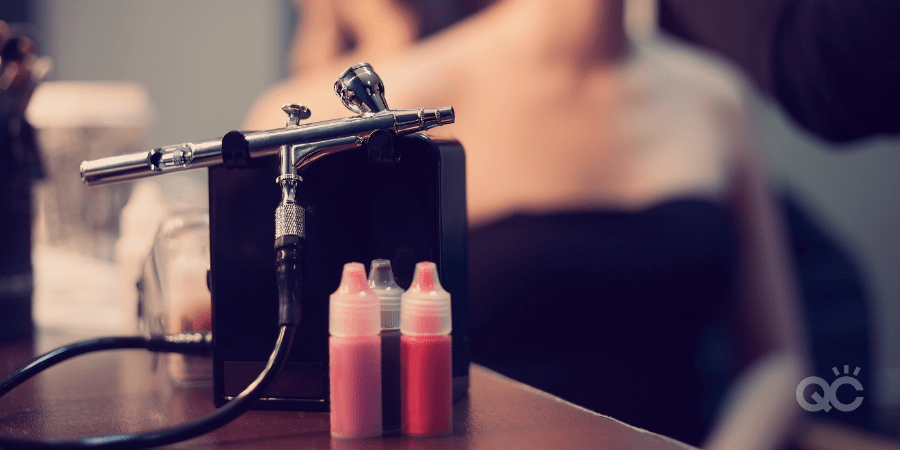
2. Be public about your personal hygiene
I’m not saying you need to divulge to your clients whether you had a shower that day or not. (I mean, you could. Might be weird, though.)
What I mean is, your clients want to know that they’re dealing with a professional. If they have ANY suspicion that you’re unsanitary, they’re not going to want you touching their face. Full stop.
This is especially the case in light of everything that’s been going on in the world these past few months. Once you and your client are able to safely work in close proximity to each other again, you’ll need to go above and beyond to reassure your customers that you’re always making their health a priority.
It can be something as simple as washing or sanitizing your hands in front of them, before the appointment begins. That, combined with only using clean makeup products/tools, and your clients will never second-guess that they can trust you to take proper care of them.
3. Avoid contaminating your tools/products
As you already know, it’s only too easy for bacteria to fester on your makeup products if you’re not careful. Similarly, strict measures need to be taken when handling your airbrush makeup and machine. Straying from these practices can result in your products and tools becoming tainted.
No, your airbrush machine won’t ever actually touch your client’s face. But it will be touching your hands. As such, cleaning the outside of your machine after every use is mandatory.
Another major area where MUAs unknowingly contaminate their airbrush makeup is by re-using the makeup itself. If you have leftover product in the jar or tray of your airbrush gun, it might seem harmless to simply pour it back into its original bottle with the rest of the product.
However, the moment you squeeze product out of the bottle, you’re exposing it to airborne germs and other unwanted bacteria. By putting it back into the bottle afterwards, you’re tainting all of that precious makeup still within that bottle by introducing to so many potential contaminants.
Worst case scenario, it spoils the makeup beyond repair. Best case scenario, it severely reduces its overall shelf-life. Given that airbrush makeup isn’t always cheap, there’s no real outcome to this that doesn’t suck for you.
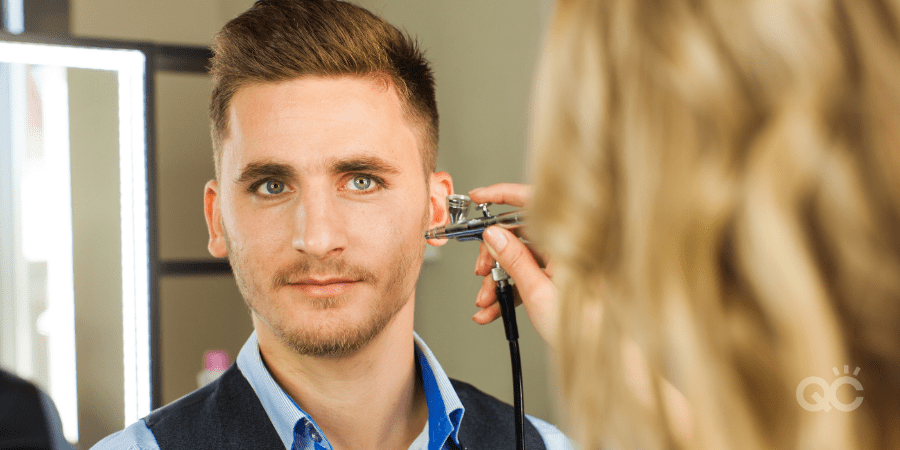
4. Facilitate proper ventilation
You know that dizzying smell that lingers in the air after you use nail polish or hairspray? These same types of fumes can occur when using an airbrush makeup machine for an extended period of time. While you may grow “nose blind” to them over time, it can be a jarring, unpleasant experience for your clients.
Without proper airflow in your work space, prolonged exposure to airbrush makeup can put your client at risk of developing a headache, an allergic reaction, respiratory problems, etc.
Combat this risk by making sure the room is properly ventilated. If there are windows and the weather outside is permitting, open them up. Bring a fan with you to the appointment, and keep it running throughout the duration of the application.
Most importantly, if your client needs a break for any reason, give it to them!
5. Do a patch test
A patch test helps to ensure that your client won’t develop any sort of negative and/or allergic reaction when coming into contact with the airbrush makeup product. As a rule of thumb, water-based airbrush makeup is typically the safest type of product for you to use, since its ingredients are most often mineral-based. It has the smallest likelihood of resulting in a rash, breakout, or allergic reaction.
That being said, many makeup artists prefer to work with alcohol or silicone-based airbrush products. Since there’s a slightly higher risk of an allergic reaction, it’s extremely important to always perform a patch test. Ideally, you will do this during the initial consultation.
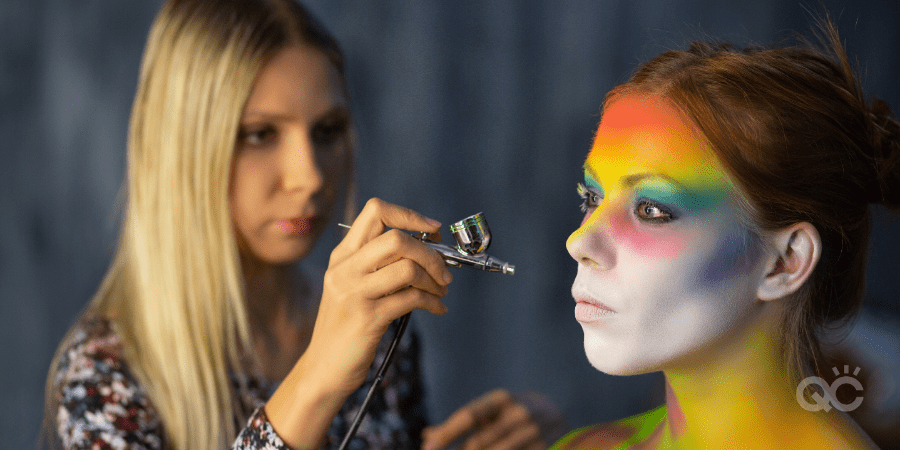
In a nutshell, this is how you will do a patch test:
- Pick the chosen airbrush makeup product, and apply a small amount on either the inside of her forearm or the side of her wrist.
- Let it sit for a few minutes.
- Remove the product, and check for any signs of redness, swelling, irritation, etc.
If everything looks clear, you’re safe to use that product on your client’s face. If not, you’ll need to switch to a gentler product and try another patch test. Remember: if your client begins to experience any pain or discomfort at any point, remove the makeup immediately!
6. Provide skincare advice
Airbrush makeup can do a pretty good job of sucking all the moisture out of your skin – especially if you already have dry skin, or don’t have a solid skincare routine in place. Before applying any makeup, always ensure to prep the skin first.
Since many editorial clients are already used to working with this makeup medium, they’re more likely to know the drill. Chances are, they understand what skincare practices they need to utilize before and after the airbrush application.
Other clients, such as bridal clients, may not be quite as knowledgeable, though. As the expert, it’s your job to tell them. Explain to her why airbrush makeup is so drying to the skin, and advise her to moisturize prior to the appointment, as well as after the makeup has been completely removed.
Pro Tip: Want to build on this and become an actual Skincare Consultant? Check out QC Makeup Academy’s Skincare Course, and add to your professional certifications in as little as 3-6 months!
7. As always, be friendly
In terms of etiquette, it’s not really any different than the etiquette you’d display during a traditional makeup session with a client. Above all else, always remember to be friendly and professional!
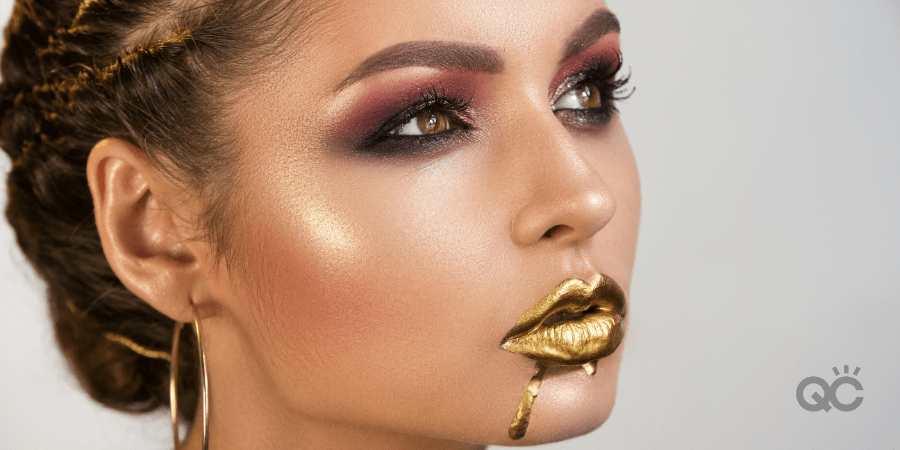
Other standard protocols to keep in mind are:
- Let your client set the conversational tone
- Cater to what your clients needs and what will make her feel the most comfortable
- Go over the look they want one more time, in case there’s anything they wish to change last-minute
- Keep your touch light
- Make sure you’ve brushed your teeth that morning, and have some mints or gum on you (just in case). You’re going to be getting a bit up-close and personal, after all!
So long as you keep all of this in mind as you develop your airbrush makeup training and skills, you’ll be well on your way to becoming a true pro! Before you know it, airbrush makeup will quickly become a successful cornerstone of your business!
Do YOU have any other tips for proper airbrush makeup safety and etiquette? Tell us in the comments below!
